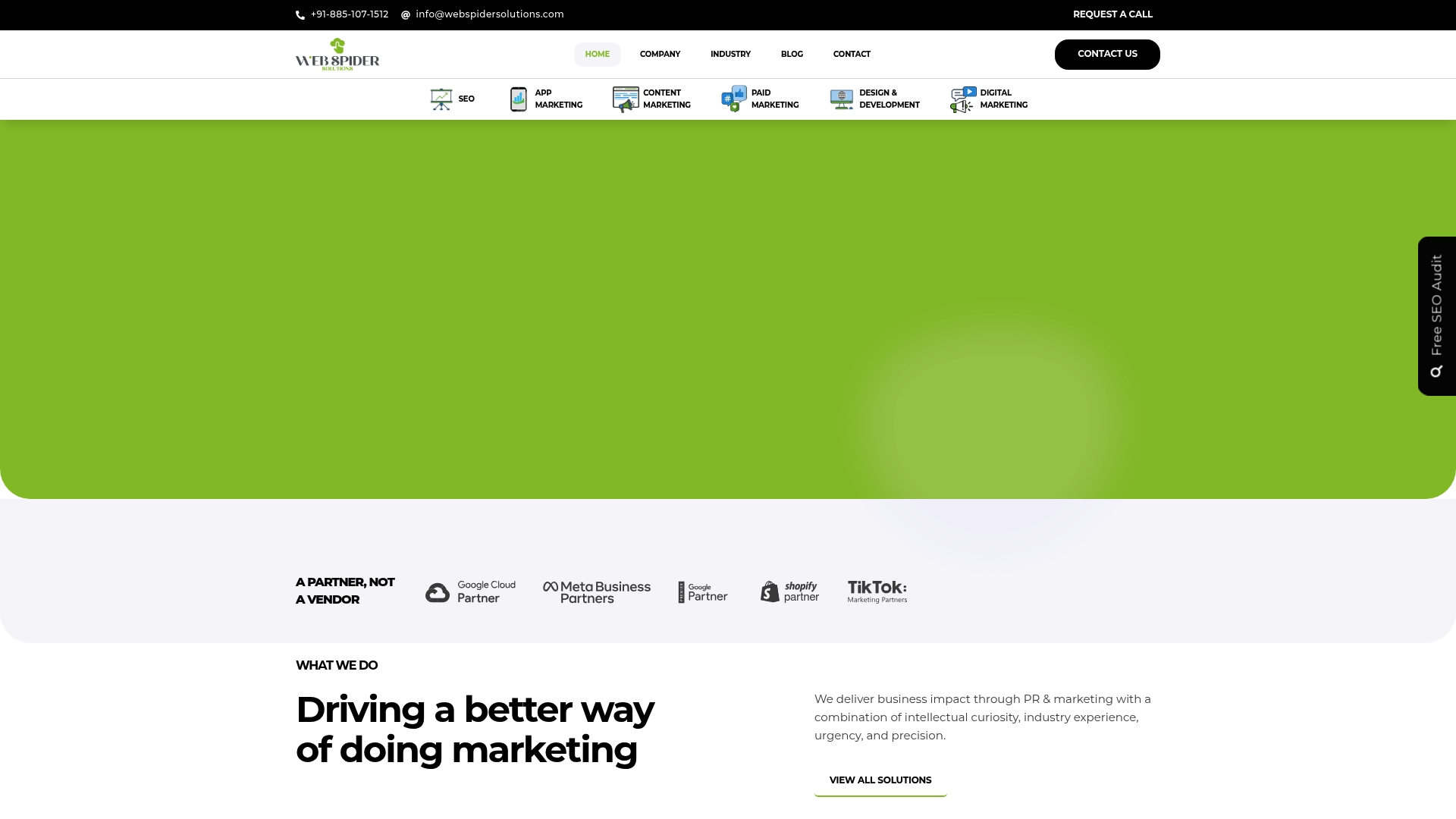Most websites never make it to the first page of Google and it is not just bad luck. In fact, only about 0.63% of people click on results from the second page. Surprised? The real shock is that most of these sites are sabotaging themselves with just a few common SEO mistakes. Fix these errors and your site could stand out while competitors fade into obscurity.
Table of Contents
- Ignoring Keyword Research
- Overlooking On-Page Seo Elements
- Neglecting Mobile Optimization
- Using Duplicate Content
- Failing To Build Quality Backlinks
- Not Tracking Seo Performance
- Underestimating Local Seo
- Forgetting About User Experience
Quick Summary
| Takeaway | Explanation |
|---|---|
| Perform keyword research diligently | Understand customer search terms to enhance visibility and traffic. Missing this step can lead to marketing failure. |
| Optimize on-page SEO elements | Use effective title tags, meta descriptions, and header structures to improve search rankings and click-through rates. |
| Ensure mobile optimization is essential | With over 60% of searches on mobile, a responsive website is vital for retaining visitors and improving search credibility. |
| Create unique, quality content | Avoid duplicate content to prevent SEO penalties and improve rankings. Unique content builds trust and enhances engagement. |
| Track SEO performance metrics regularly | Use analytics tools to monitor progress and refine strategies. Continuous measurement is key for sustained digital success. |
1: Ignoring Keyword Research
Keyword research represents the foundational strategy for successful search engine optimization, yet many businesses completely overlook this critical process. Without understanding the specific search terms your potential customers use, you’re essentially navigating digital marketing blindfolded.
Effective keyword research goes far beyond merely selecting random popular words. It requires deep strategic analysis of search intent, volume, and competition. Comprehensive keyword strategy helps businesses understand exactly what their target audience seeks online.
According to Ahrefs keyword research study, businesses that invest time in thorough keyword analysis can see up to 200% improvement in organic search traffic. The most successful keyword strategies involve several key considerations:
- Identifying long-tail keywords with specific user intent
- Analyzing competitor keyword gaps
- Understanding search volume and difficulty metrics
- Matching keywords to specific customer journey stages
Many entrepreneurs mistakenly believe generic, high-traffic keywords will automatically drive results. However, hyper-targeted keywords that precisely match user search intent deliver significantly better conversion rates. For instance, targeting “affordable web design services for small businesses” will likely convert more effectively than the broad term “web design”.
Professional SEO practitioners recommend continuously updating your keyword strategy. Search trends evolve rapidly, and what worked six months ago might be obsolete today. Regular keyword research helps businesses stay ahead of changing digital marketing landscapes and maintain competitive search rankings.
Avoiding keyword research isn’t just a missed opportunity—it’s a direct path to digital invisibility. Your potential customers are searching for solutions right now. The question is: will they find your business or your competitors?
2: Overlooking On-Page SEO Elements
On-page SEO represents the fundamental optimization strategies that directly impact your website’s search engine visibility. Many businesses mistakenly treat these elements as optional, which critically undermines their digital marketing performance.
Comprehensive on-page SEO optimization involves meticulously crafting multiple website elements to communicate effectively with search engine algorithms. According to Moz’s SEO research, websites that implement robust on-page strategies can improve search rankings by up to 30%.
The most critical on-page SEO elements businesses frequently neglect include:
- Creating descriptive and keyword-rich title tags
- Writing compelling meta descriptions
- Implementing proper header hierarchy (H1, H2, H3)
- Optimizing image alt text and file names
Title tags serve as your webpage’s primary communication point with search engines. A well-crafted title tag can dramatically increase click-through rates by clearly signaling page content and relevance. Similarly, meta descriptions provide a crucial opportunity to entice potential visitors directly from search result pages.
Header structure plays a pivotal role in content organization and SEO performance. Search engines use header tags to understand content hierarchy and context. Improperly structured headers can confuse search algorithms and reduce content comprehensibility.
Image optimization represents another frequently overlooked on-page SEO strategy. Search engines cannot “see” images but rely on alt text and file names to understand visual content. Descriptive, keyword-relevant image attributes can significantly enhance overall page SEO performance.
Businesses that treat on-page SEO as an afterthought are essentially hiding their digital assets from potential customers. Precise, strategic on-page optimization transforms your website from invisible to irresistible in search engine results.
3: Neglecting Mobile Optimization
Mobile optimization is no longer optional—it’s a critical necessity for digital survival. Businesses that ignore mobile user experience risk losing substantial web traffic and search engine rankings. Responsive web design strategies have become fundamental to digital success.
According to Google’s mobile search statistics, over 60% of all internet searches now occur on mobile devices. This dramatic shift demands websites adapt or become digitally irrelevant.
The most significant mobile optimization challenges businesses encounter include:
- Slow page loading speeds on mobile devices
- Unresponsive design that breaks on smaller screens
- Text that is difficult to read without zooming
- Navigation menus that are not touch-friendly
Mobile responsiveness directly impacts search engine rankings. Google’s mobile-first indexing means the search engine primarily uses the mobile version of content for ranking and indexing. Websites with poor mobile experiences get penalized, effectively becoming invisible in search results.
Technical considerations extend beyond simple visual adaptation. Mobile optimization requires comprehensive strategies addressing page speed, touch-friendly interfaces, and streamlined content presentation. Complex desktop layouts that work perfectly on large screens can become unusable nightmares on smartphones.
Professional web developers recommend creating mobile experiences that are not just scaled-down versions of desktop sites, but completely reimagined user interfaces. This means prioritizing essential information, simplifying navigation, and ensuring rapid load times.
Businesses that treat mobile optimization as an afterthought are essentially telling potential customers they do not value their digital experience. In a world where first impressions happen in milliseconds, your mobile website is often the critical gateway to customer engagement.
4: Using Duplicate Content
Duplicate content represents a silent killer of search engine optimization strategies, creating invisible barriers that prevent websites from achieving their true ranking potential. Many businesses unknowingly sabotage their digital visibility by recycling content across multiple pages or websites.
Advanced duplicate content detection techniques are critical for maintaining search engine credibility. According to Google’s Webmaster Guidelines, search engines may penalize or completely ignore websites with substantial duplicate content.
The most common scenarios of duplicate content generation include:
- Copying product descriptions across multiple pages
- Republishing identical blog posts on different platforms
- Creating near-identical web pages with minor variations
Duplicate content confuses search engine algorithms, making it difficult to determine which version of the content should be ranked. This uncertainty can lead to significant ranking penalties, effectively rendering your carefully crafted web pages invisible in search results.
Search engines like Google employ sophisticated algorithms designed to identify and manage duplicate content. When multiple identical or substantially similar pages are detected, the algorithm typically selects one “canonical” version to display in search results, potentially suppressing other versions.
Professional SEO strategists recommend creating unique, value-driven content for each webpage. This means developing original text, perspectives, and insights that provide genuine value to readers. Simply rephrasing existing content or copying text from other sources will not suffice.
Businesses must understand that content originality extends beyond mere text. Unique meta descriptions, carefully crafted titles, and distinctive page structures contribute to establishing content authenticity. Each webpage should represent a distinct, valuable resource that serves a specific user intent.
Treating your digital content as a strategic asset rather than a recyclable commodity is key to maintaining strong search engine performance. Originality isn’t just about avoiding penalties—it’s about creating meaningful connections with your audience.
5: Failing to Build Quality Backlinks
Backlink development represents a cornerstone of effective SEO strategy, yet many businesses fundamentally misunderstand its complexity. Quality always trumps quantity when it comes to external website linking.
Understanding high-quality backlink strategies is critical for digital marketing success. According to Ahrefs’ comprehensive backlink research, websites with robust, authoritative backlink profiles can experience up to 300% improvement in search engine rankings.
The most critical considerations for effective backlink strategies include:
- Targeting reputable, industry-relevant websites
- Creating genuinely valuable content that naturally attracts links
- Avoiding manipulative link-building techniques
Most businesses erroneously believe that any external link will improve their SEO performance. Search engines have sophisticated algorithms that distinguish between genuine, contextually relevant backlinks and artificially generated link networks.
Professional SEO experts recommend focusing on earning links through exceptional content rather than purchasing or exchanging them. This means developing in-depth articles, original research, comprehensive guides, and innovative resources that other websites naturally want to reference.
Backlink quality is determined by multiple factors, including the linking website’s domain authority, topical relevance, and the context surrounding the link. A single backlink from a highly respected industry publication can significantly outweigh dozens of links from low-quality, irrelevant websites.
The most successful digital marketing strategies integrate backlink development as an organic, ongoing process. This requires continuous investment in content creation, relationship building with industry influencers, and maintaining a reputation for producing valuable, shareable information.
Businesses that treat backlink development as an afterthought are essentially leaving significant digital marketing potential unexplored. Your external link profile is a powerful signal of your website’s credibility and expertise in the eyes of search engines.
6: Not Tracking SEO Performance
Businesses that ignore SEO performance analytics are essentially navigating digital marketing blindfolded. Performance tracking transforms guesswork into strategic decision-making, providing critical insights into your online visibility and growth potential.
Comprehensive SEO performance monitoring enables businesses to understand their digital marketing effectiveness. According to Google Analytics research, companies that systematically track key performance indicators can improve their organic traffic by up to 50%.
The most crucial SEO performance metrics businesses should monitor include:
- Organic search traffic volume and trends
- Keyword ranking progression
- Conversion rates from organic search
- Bounce rates and user engagement signals
Without consistent performance tracking, businesses remain unaware of their digital marketing strengths and weaknesses. Search engine algorithms continuously evolve, making real-time performance monitoring not just beneficial, but essential.
Professional digital marketers recommend utilizing multiple analytics platforms to gain comprehensive insights. Google Analytics, Google Search Console, and specialized SEO tools provide complementary perspectives on website performance, allowing businesses to develop nuanced, data-driven optimization strategies.
Keyword ranking tracking goes beyond simple position monitoring. Modern SEO performance analysis examines user intent, content relevance, and engagement metrics. This holistic approach helps businesses understand not just where they rank, but why they rank and how to improve.
Many entrepreneurs mistakenly believe SEO is a one-time effort. In reality, it’s a continuous process of measurement, analysis, and strategic adjustment. Websites that consistently track and respond to performance data maintain a competitive edge in increasingly crowded digital markets.
Treating SEO performance tracking as an optional activity is equivalent to running a business without financial statements. Your digital marketing strategy requires ongoing measurement, interpretation, and strategic refinement to achieve sustainable online success.
7: Underestimating Local SEO
Local SEO represents a critical yet frequently overlooked digital marketing strategy that can dramatically transform small and medium-sized businesses’ online visibility. Many businesses mistakenly believe local search optimization is optional, when in reality, it’s a powerful mechanism for attracting nearby customers.
Advanced local SEO optimization techniques can revolutionize how businesses connect with their immediate market. According to Google’s local search statistics, 46% of all Google searches have local intent, making local SEO an indispensable marketing tool.
The most crucial elements of effective local SEO include:
- Maintaining accurate Google Business Profile information
- Generating consistent local citations across platforms
- Collecting genuine customer reviews
Google’s algorithm prioritizes businesses with comprehensive, verified local information. This means simply having a website is no longer sufficient. Businesses must actively manage their online local presence, ensuring accuracy across multiple digital platforms.
Local SEO extends far beyond basic location information. It involves creating location-specific content, optimizing for geographic keywords, and developing a robust reputation management strategy. Each review, each local mention contributes to your digital neighborhood credibility.
Professional digital marketers understand that local search optimization is about creating a holistic digital footprint that resonates with both search engines and potential customers. This involves strategic content creation, precise geographic targeting, and consistent brand messaging across all online channels.
Many small businesses incorrectly assume that local SEO only matters for brick-and-mortar establishments. In reality, service-based businesses, online retailers, and professional services can all benefit significantly from targeted local search strategies.
Ignoring local SEO is equivalent to operating a storefront without a sign, hoping customers will magically discover your business. In the digital age, visibility is currency, and local SEO is your most powerful marketing investment.
8: Forgetting About User Experience
User experience represents the critical intersection between technical optimization and human interaction. Businesses that prioritize search engine algorithms over actual user needs create digital environments that repel potential customers.
Comprehensive user experience optimization strategies can transform website performance. According to Nielsen Norman Group research, a well-designed user experience can increase conversion rates by up to 400%.
The most significant user experience considerations include:
- Ensuring intuitive website navigation
- Maintaining fast page loading speeds
- Creating mobile-responsive design
Search engines like Google have sophisticated algorithms that directly measure user interaction signals. Bounce rates, time on site, and click-through rates are critical indicators of how effectively your website serves user needs. Websites with poor user experiences get systematically deprioritized in search rankings.
Professional web designers understand that user experience goes beyond visual aesthetics. It involves creating seamless, intuitive pathways that guide visitors precisely where they want to go. This means anticipating user intent, reducing friction in navigation, and presenting information in clear, digestible formats.
Modern users have extraordinarily short attention spans. A website that requires more than a few seconds to load or navigate will lose potential customers instantly. Technical performance and user experience are now inseparable components of digital marketing success.
Many businesses mistakenly view their website as a digital brochure rather than an interactive platform. Successful websites function as dynamic, responsive tools that adapt to individual user needs, providing personalized experiences that feel effortless and intuitive.
Forgetting about user experience is like opening a store with incomprehensible signage and blocked entrances. No matter how good your products or services are, if users cannot easily access and understand them, your digital presence becomes functionally invisible.
Below is a comprehensive table summarizing the eight most common SEO mistakes businesses make and the core solutions outlined in the article.
| SEO Mistake | Why It Hurts Your Business | Key Solution/Benefit |
|---|---|---|
| Ignoring Keyword Research | Leads to irrelevant traffic or digital invisibility; missing targeted opportunities | Perform thorough, ongoing keyword analysis to match user intent |
| Overlooking On-Page SEO Elements | Lowers search rankings and reduces click-through rates | Optimize title tags, meta descriptions, headers, and image tags |
| Neglecting Mobile Optimization | Causes poor experience for 60%+ of users, harming rankings and engagement | Develop fully responsive, fast, mobile-friendly websites |
| Using Duplicate Content | Triggers search penalties and ranking loss; confuses search engines | Create unique, original content for every page |
| Failing to Build Quality Backlinks | Limits authority, ranking potential, and referral traffic | Earn links from respected, relevant sources with valuable content |
| Not Tracking SEO Performance | Prevents understanding what works; ongoing efforts waste resources | Regularly monitor analytics, keyword rankings, and engagement |
| Underestimating Local SEO | Misses out on nearly half of searchers with local intent; reduces leads | Optimize Google Business Profile, gather reviews, and local content |
| Forgetting About User Experience | Increases bounce rates, lowers conversions, and demotes rankings due to poor usability | Prioritize fast load times, mobile usability, and easy navigation |
Ready to Make Your SEO Mistakes a Thing of the Past?
If you see your business in any of the SEO pitfalls described above, you’re not alone. Many decision-makers get frustrated by invisible websites, wasted ad spend, or declining search rankings simply because of classic missteps like missing keyword research, poor mobile optimization, and weak backlink strategies. At Web Spider Solutions, we turn those struggles into real digital growth with smart solutions that target exactly what holds your business back. For actionable ideas tailored to your market, see our Stories Archives where businesses like yours overcame costly SEO errors and now dominate search results.

Why settle for average visibility when you could be your industry’s leader? Take the first step toward technical SEO excellence, higher rankings, and a better customer experience across your digital presence. Visit Web Spider Solutions to request your free SEO audit or start a conversation with our experts today. Your most successful quarter starts when you fix the SEO mistakes that are costing your business now.
Frequently Asked Questions
What are the most common SEO mistakes businesses make?
The most common SEO mistakes include ignoring keyword research, overlooking on-page SEO elements, neglecting mobile optimization, using duplicate content, failing to build quality backlinks, not tracking SEO performance, underestimating local SEO, and forgetting about user experience.
Why is keyword research important for SEO?
Keyword research is crucial because it helps businesses understand the specific search terms potential customers use. Effective keyword analysis can lead to increased organic search traffic and improved conversion rates by targeting hyper-specific keywords that match user intent.
How does on-page SEO impact search engine rankings?
On-page SEO directly affects how well a website performs in search engine rankings. Optimizing elements like title tags, meta descriptions, header hierarchy, and image alt text can lead to better visibility and higher click-through rates in search results.
What is the significance of mobile optimization in SEO?
Mobile optimization is essential because over 60% of all internet searches occur on mobile devices. Search engines prioritize mobile-friendly websites in their rankings, and a poor mobile experience can lead to lost traffic and lowered visibility.
Recommended











